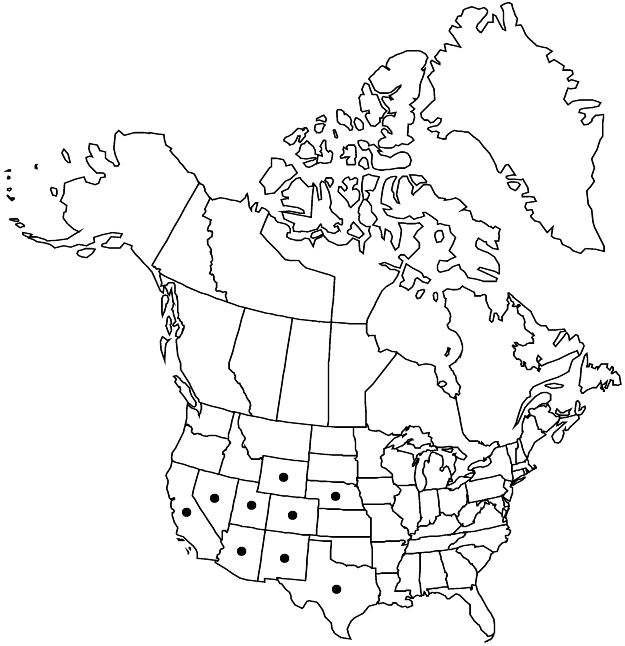Linum puberulum
Pl. World 1: 22. 1897.
Herbs, annual or short-lived perennial, 4–25 cm, densely and finely gray-puberulent throughout. Stems ascending, branched at base, herbaceous throughout. Leaves alternate or sometimes proximal leaves opposite, appressed-ascending; stipular glands present (conspicuous); blade linear, 7–20 × 0.6–1.5 mm, margins entire or distal leaves sparsely glandular-toothed, ciliate, apex acute; 1-nerved. Inflorescences open panicles. Pedicels 5–10 mm. Flowers: sepals falling tardily, lanceolate, 4–7 mm, margins of inner sepals scarious, glandular-toothed, apex acute to acuminate, puberulent at least on midrib; outer 3-nerved; petals yellowish orange to salmon, with maroon or reddish base, obcordate or broadly obovate, 9–15 mm; stamens 4–7 mm; anthers 0.6–1.4 mm; staminodia absent; styles connate nearly to apex, 3–7 mm; stigmas dark, capitate. Capsules ovoid-ellipsoid, 3.5–4 × 2.5–5 mm, apex obtuse, dehiscing into 5, 2-seeded segments, segments persistent on plant, false septa complete, proximal margin not terminating in loose fringe, distal part cartilaginous, margins ciliate. Seeds 1.5–3 × 0.9–1.3 mm. 2n = 30.
Phenology: Flowering May–Oct.
Habitat: Dry, open areas, rocky, sandy, limestone, gypsum, or sometimes clay soils.
Elevation: 300–2500 m.
Distribution

Ariz., Calif., Colo., Nebr., Nev., N.Mex., Tex., Utah, Wyo., Mexico (Chihuahua, Coahuila, Sonora).
Discussion
Corollas of Linum puberulum are broadly bowl-shaped. The filaments and styles are pale pink; the stigmas are dark maroon. The pollen is bright yellow; on herbarium specimens, the anthers are golden yellow to orangish yellow, drying darker. In some flowers of L. puberulum, the styles seem to be eccentric. C. M. Rogers (1968) noted that L. puberulum is the only hairy species of Linum in western North America with united styles; its gray indument and complete false septa differentiate it from L. vernale, which is glabrous and has incomplete false septa. Linum puberulum is fairly common in the Rocky Mountain foothills and high plains; it occurs in the mountains in the eastern Mojave Desert.
Selected References
None.